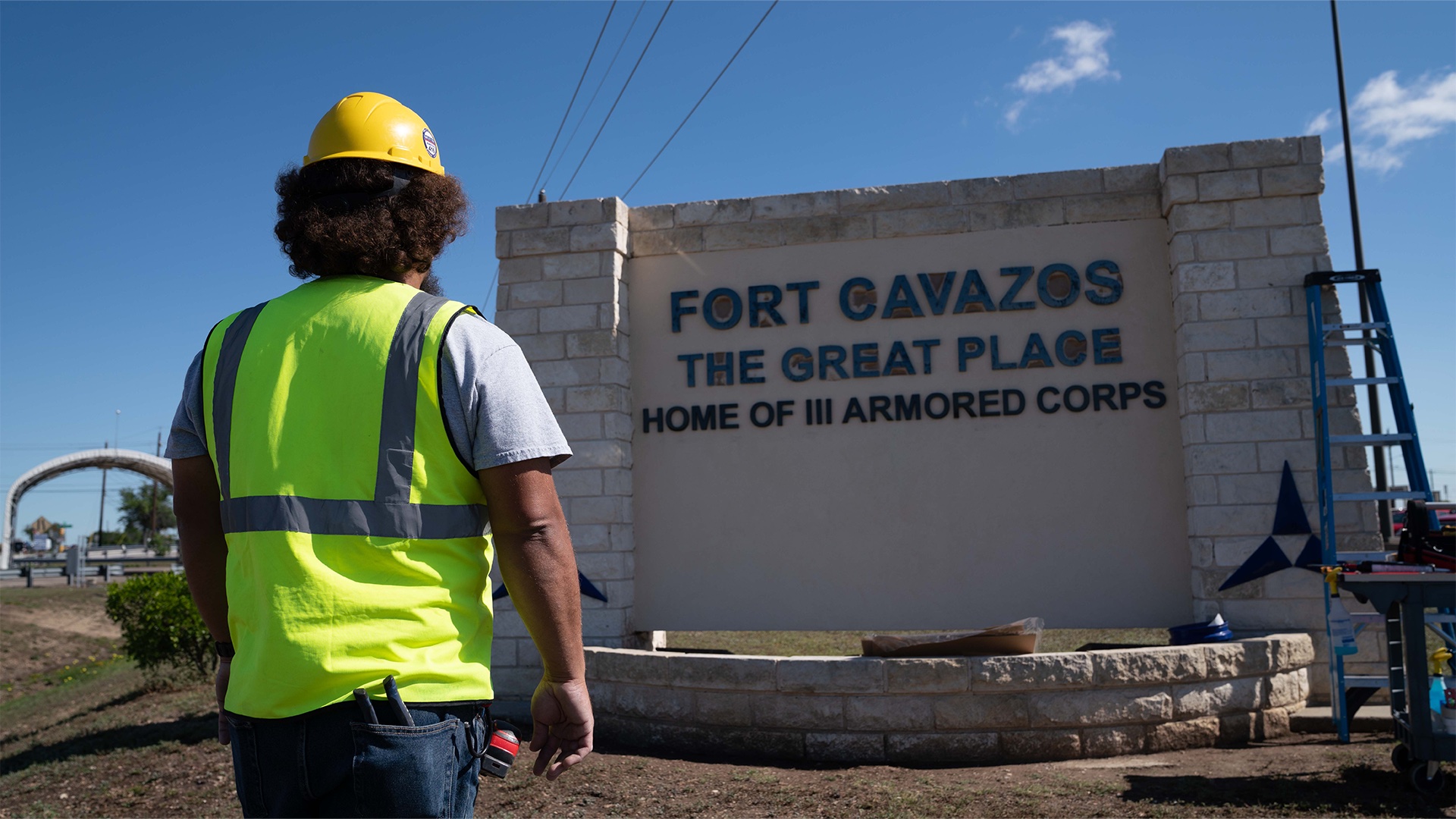

Gen. Richard Cavazos, was born in Texas in 1929, the son of a ranch foreman who fought in World War I. As a young infantry officer in Korea, Cavazos led a company of mostly-Puerto Rican soldiers in a regiment known as the “Borinqueneers.”
In June 1953, he led the unit in an assault that came under artillery fire.
Ordered to retreat, Cavazos retrieved five wounded soldiers as shells exploded around them, an act for which he was awarded the Distinguished Service Cross. He earned a second DSC over a decade later, fighting in Vietnam.
And as of today, the Texas Army base long known as Fort Hood bears his name as Fort Cavazos.
Following the recent redesignations of Fort Pickett, Virginia to Fort Barfoot and Fort Lee, Virginia to Fort Gregg-Adams, Fort Hood became the third Army base to change its name following the recommendations of the Pentagon’s Naming Commission. Home to roughly 65,000 soldiers and dependents, Cavazos is by far the largest installation to make the change to date, as the Army moves to drop the names of Confederate generals from its installations.
Subscribe to Task & Purpose Today. Get the latest military news, entertainment, and gear in your inbox daily.
The assault that earned Cavazos his first DSC occurred on June 14, 1953.
“Exposed to heavy hostile fire, Lieutenant Cavazos located five men who had been wounded in the action. He evacuated them, one at a time, to a point on the reverse slope of the hill from which they could be removed to the safety of the friendly lines,” reads the citation.
After Korea, Cavazos stayed in the Army, and in 1967 was a battalion commander in Vietnam.
“He was an atypical army officer in Vietnam,” Bill Fee, a soldier who served with him then told the U.S. Army Museum. “Most battalion commanders stood in the rear or in a helicopter above to direct the battle … [He] had nothing to do with that. He fought on the ground with his troops during battle.”
Cavazos’ commitment to lead-from-the-front led to his second DSC. When his battalion came under attack near Loc Ninh, he organized a counterattack and directed artillery to repel the assault.
Cavazos, according to his awards citation, “disregarded his personal safety and led an assault on the enemy’s hillside position, often exposing himself to hostile fire while moving among his troops.”
Cavazos eventually became the Army’s first Hispanic Brigadier General and was noted as a mentor and leader to other soldiers with Hispanic roots.
“I told him what he meant to us poor Hispanic kids,” Maj. Gen. Alfred Valenzuela told the U.S. Army Museum. “His impact as a mentor is probably the greatest impact our army had …we all looked up to him as an American soldier, a Hispanic soldier. He was the guy we wanted to be. If we couldn’t be him, we wanted to be near him and serve with him.”
Along with the two DSC’s Cavazos was awarded two Silver Stars and a Distinguished Flying Cross. Cavazos eventually commanded a full division and III Corps commander, and retired in 1984 as the head of U.S. Army Forces Command. Throughout his career he received two Distinguished Service Crosses, a Silver Star, 5 Bronze Stars and the Purple Heart.
The Naming Commission was established in 2021, tasked with determining new names for the myriad of ships, military bases, and accompanying barracks and streets named for Confederate officers.
“We are proud to be renaming Fort Hood as Fort Cavazos in recognition of an outstanding American hero, a veteran of the Korea and Vietnam wars and the first Hispanic to reach the rank of four-star general in our Army. General Cavazos’ combat proven leadership, his moral character and his loyalty to his Soldiers and their families made him the fearless yet respected and influential leader that he was during the time he served, and beyond,” Lt. Gen. Sean Bernabe, III Armored Corps Commanding General said in an Army release. “We are ready and excited to be part of such a momentous part of history, while we honor a leader who we all admire.”
Fort Cavazos is one of the Army’s largest installations, home to III Corps and the 1st Cavalry Division, among other units. Established in 1942, the post was named after Lt. Gen. John Bell Hood, a Confederate general.
In more recent years, the name “Fort Hood” has also found itself as a symbol of Army-wide misconduct.
A 2021 study by the RAND Corporation found that female soldiers at Fort Hood had the highest risk of sexual assault or harrassment of any post in the Army. Those findings followed a string of high-profile cases that shook the Army’s public image.
In April 2020, Army Spc. Vanessa Guillén was murdered by a fellow soldier at Fort Hood, bringing a wave of scrutiny to the base. Over a dozen unit commanders were suspended or relieved in the fallout. A subsequent review of the base’s Sexual Harassment/Assault Response and Prevention (SHARP) program found that the base’s program was ““structurally weak and under-resourced,” and “ineffective, to the extent that there was a permissive environment for sexual assault and sexual harassment.”
There have also been other allegations of toxic leadership, soldiers dying, andmore sexual assaults.
The renaming of Army installations named for Confederate officers will continue throughout this year.Fort Benning, Georgia is scheduled to become Fort Moore – named for Lt. Gen. Hal Moore and his wife, Julia Moore, — on May 11. Fort Bragg will be renamed Fort Liberty on June 2.
The latest on Task & Purpose
- Ukraine claims Russian troops and Wagner mercenaries are fighting each other
- Star Wars’ Stormtroopers are a reminder why marksmanship is so important
- Marine veteran killed while evacuating Ukrainian civilians from Bakhmut
- US Army Special Operations Command has its first female senior enlisted leader
Marine element conducts short-notice air defense deployment to Middle East
